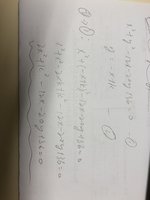Please help solve the question below, thanks!
Q. The coordinates of the centre of the circle C are (6,10). It is given that the x-axis is a tangent to C.
a.) Find the equation of C
b.) The slope and the y-intercept of the straight line L are -1 and k respectively. If L cuts C at A and B, express the coordinates of the mid-point of AB in in terms of k.
Knowing that the answer of A is: x^2+y^2-12x-20y+36=0, please help the b part, thanks.!!
Q. The coordinates of the centre of the circle C are (6,10). It is given that the x-axis is a tangent to C.
a.) Find the equation of C
b.) The slope and the y-intercept of the straight line L are -1 and k respectively. If L cuts C at A and B, express the coordinates of the mid-point of AB in in terms of k.
Knowing that the answer of A is: x^2+y^2-12x-20y+36=0, please help the b part, thanks.!!


